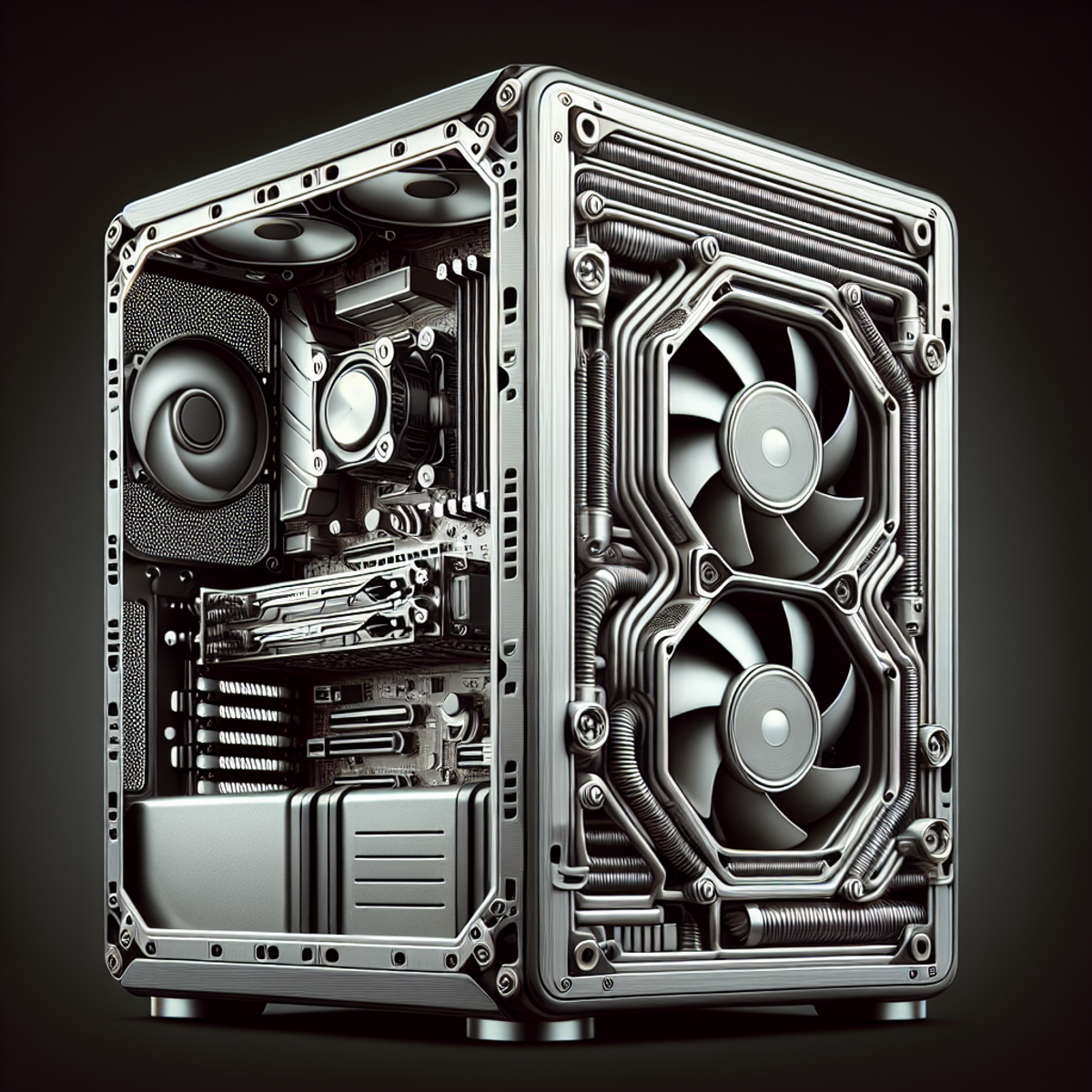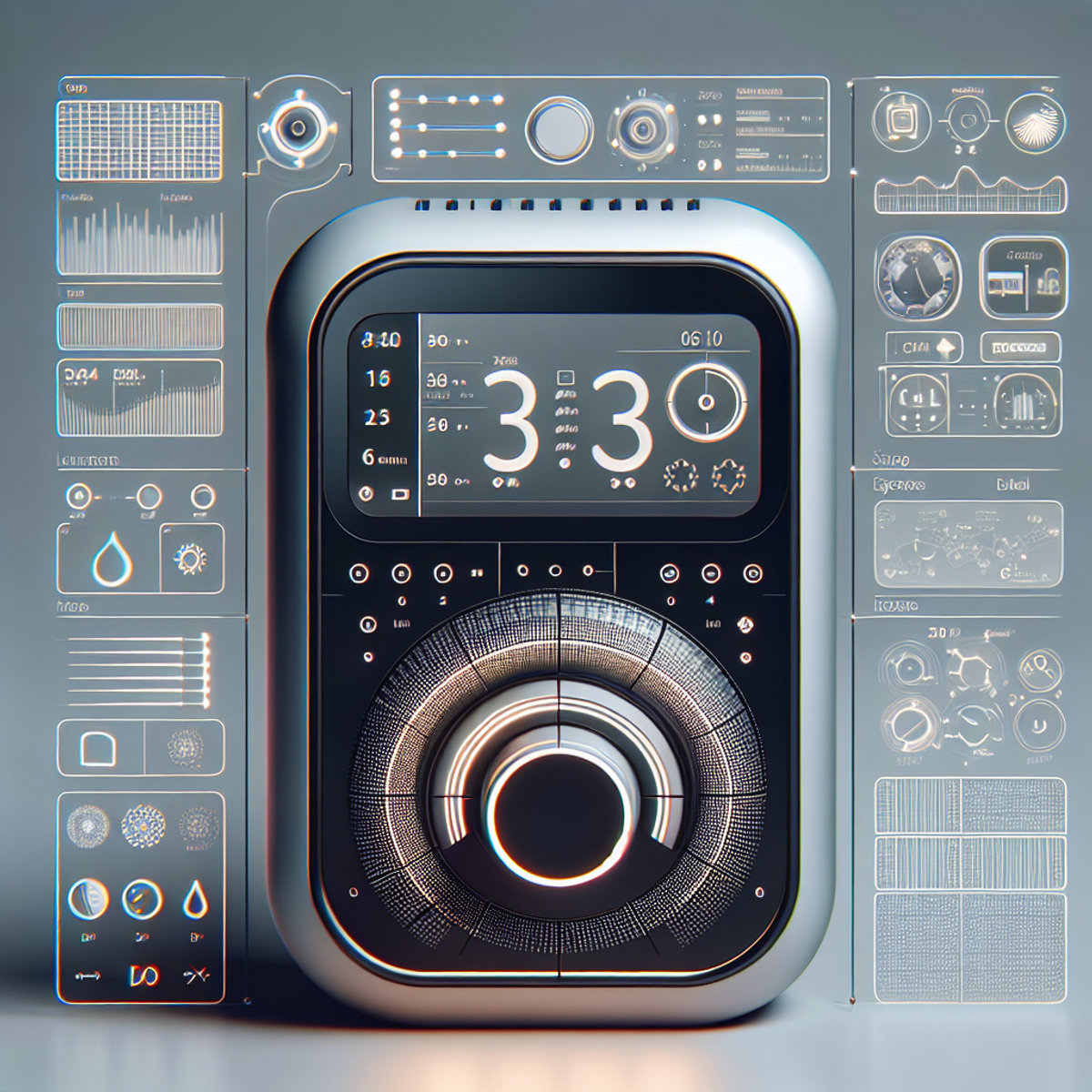Python for Indoor Air Quality Monitoring

Python for Indoor Air Quality Monitoring
Introduction
Monitoring indoor air quality is crucial for maintaining a healthy and comfortable living environment. Poor indoor air quality can lead to various health issues, including respiratory problems, allergies, and even long-term effects on overall well-being. With the advancement of technology, we now have the ability to develop our own indoor air quality monitoring systems using Python.
Python has become a popular programming language in the field of environmental monitoring due to its versatility, ease of use, and extensive library support. It provides a wide range of tools and libraries that make it easier to collect, analyze, and visualize data from various sensors. In this article, we will explore how Python can be used to build an indoor air quality monitor and discuss the steps involved in the process.
The purpose of this article is to guide you through the development of a Raspberry Pi-based indoor air quality monitor using Python. We will cover everything from sensor selection to designing a breakout board for sensor connectivity, building the prototype monitor, and implementing software components for data collection and visualization.
By the end of this article, you will have a comprehensive understanding of how to create your own indoor air quality monitor using Python. Whether you're a hobbyist looking to improve your living space or an environmental enthusiast interested in monitoring air quality on a larger scale, this article will provide you with valuable insights and practical knowledge.
Motivation for Building an Indoor Air Quality Monitor
The motivation for building an indoor air quality monitor stems from the critical need to ensure a healthy and safe indoor environment. The following points outline the essential factors driving the development and implementation of indoor air quality monitoring systems:
1. Need for Monitoring Indoor Air Quality
- Monitoring indoor air quality is crucial due to the significant amount of time people spend indoors.
- Factors such as inadequate ventilation, presence of pollutants, and other indoor air contaminants create a pressing need to continually monitor and maintain optimal air quality levels.
2. Health Risks Associated with Poor Indoor Air Quality
- Poor indoor air quality can have detrimental effects on human health, leading to various respiratory issues, allergies, and other health complications.
- Exposure to pollutants such as volatile organic compounds (VOCs), particulate matter (PM), carbon dioxide (CO2), formaldehyde, and ozone can result in short-term discomfort as well as long-term health issues.
3. Benefits of Having an Indoor Air Quality Monitor
- Having an indoor air quality monitor offers extensive benefits:
- It allows individuals and organizations to proactively address potential air quality issues, thereby safeguarding the health and well-being of occupants.
- By continuously monitoring air quality parameters, it becomes possible to identify trends, take corrective measures, and create a healthier indoor environment.
The motivation for building an indoor air quality monitor is rooted in the necessity to mitigate health risks associated with poor indoor air quality through proactive monitoring and management.
Selection of Sensors
The selection of sensors is a crucial aspect of building an indoor air quality monitor. Each sensor plays a specific role in monitoring different aspects of indoor air quality. When choosing sensors for your monitoring system, you need to consider various factors such as accuracy, sensitivity, and compatibility with the monitoring platform. Let's delve into the importance of each sensor, factors to consider when selecting sensors, and a comparison between different sensor options available.
Importance of Each Sensor in Monitoring Indoor Air Quality
- Monitors the temperature levels within the indoor environment.
- Helps in understanding thermal comfort and potential for mold growth.
- Measures barometric pressure and altitude.
- Aids in detecting changes in atmospheric pressure that could indicate ventilation issues.
- Detects harmful gases emitted from various household products and building materials.
- Provides insights into potential indoor air pollution sources.
- Measures the concentration of fine particles in the air.
- Identifies potential respiratory health risks associated with airborne particles.
- CO2 Sensor:
- Monitors carbon dioxide levels.
- Indicators for poor ventilation or high occupancy, which can affect cognitive function and overall well-being.
- Formaldehyde Sensor:
- Detects formaldehyde emissions from furniture, flooring, and other household products.
- Helps in identifying potential sources of indoor air pollution.
- Ozone Sensor:
- Monitors ozone levels in the indoor environment.
- Indicates potential exposure to ozone, which can cause respiratory issues.
Factors to Consider When Selecting Sensors
- Accuracy: Ensure that the sensors provide accurate measurements to make informed decisions about indoor air quality.
- Sensitivity: The sensors should be sensitive enough to detect minor fluctuations in air quality parameters.
- Compatibility: Select sensors that are compatible with the monitoring platform and can seamlessly integrate with the data collection system.
- Maintenance: Consider the maintenance requirements of each sensor to ensure long-term reliability and performance.
Comparison Between Different Sensor Options Available
When exploring sensor options for indoor air quality monitoring, you will encounter a variety of brands and models offering different features and specifications. It's essential to compare these options based on:
- Accuracy of measurements
- Range of detection
- Power consumption
- Durability and longevity
- Compatibility with the monitoring platform
By carefully evaluating these factors, you can select sensors that align with your specific indoor air quality monitoring needs while ensuring reliable and accurate data collection for analysis and visualization purposes.
Designing a Breakout Board for Sensor Connectivity
A breakout board is a convenient platform for connecting multiple sensors to a single device, like a Raspberry Pi. It makes wiring easier and provides a central interface for managing sensor connections. These boards typically consist of pin headers that allow direct connection to the sensors, along with additional components like voltage regulators and signal conditioning circuits.
When designing a breakout board, consider the following aspects:
Pin layout: Arrange the pins in a logical and organized manner, keeping in mind the sensor connections and their corresponding data lines.
Power management: Include a voltage regulator circuit to ensure stable power supply to the sensors, especially if they require different voltage levels.
Signal conditioning: Depending on the sensor outputs, you might need to incorporate amplifiers, filters, or level shifters to ensure accurate signal processing.
Prototyping and testing: Before finalizing the design, it's crucial to prototype the breakout board and thoroughly test its functionality with different sensors.
Documentation: Clearly label the pinouts and provide comprehensive documentation on sensor compatibility and usage guidelines.
By carefully considering these factors during the breakout board design process, you can simplify sensor connectivity and enhance the overall usability of your indoor air quality monitoring system.
Purpose and Function of a Breakout Board
Here are the main reasons why you might use a breakout board:
- Consolidated Connectivity: A breakout board simplifies the wiring process by consolidating the connections for multiple sensors. This reduces clutter and makes the overall setup neater.
- Voltage Level Shifting: Some sensors operate at different voltage levels than the microcontroller or single-board computer they're connected to. A breakout board can include circuitry to shift the voltage levels and ensure compatibility between the sensors and the main device.
- Signal Conditioning: To get accurate readings from sensors, it's sometimes necessary to adjust or "condition" their signals. Breakout boards can have components like amplifiers, filters, or analog-to-digital converters that optimize the sensor signals for better accuracy.
Design Considerations for the Breakout Board
When designing your own breakout board, there are several factors to consider:
- Compatibility: Make sure that your breakout board is compatible with the specific sensors you're using. This means checking things like voltage levels, signal types, and communication protocols.
- Physical Layout: Plan out the physical layout of the breakout board carefully. Consider where each sensor will be placed and how easy it will be to wire and maintain them.
- Protection Circuitry: It's important to protect both your sensors and your main device from electrical faults or power surges. You can do this by including circuitry like voltage regulators, fuses, or transient voltage suppressors on your breakout board.
- Expansion Capability: Think about whether you might want to add or change sensors in the future. Designing your breakout board with expansion capabilities, such as extra pins or connectors, can make it easier to upgrade later on.
By taking these design considerations into account, you can create a breakout board that's reliable, efficient, and perfectly suited to your sensor setup.
Building the Prototype Monitor
Building the prototype monitor is a crucial step in the process of creating an indoor air quality monitoring system. This section will discuss the steps involved in building the prototype monitor, the importance of a custom case and fan ventilation system, as well as the challenges that may be faced during the construction process. By taking these design considerations into account, you can create a breakout board that's reliable, efficient, and perfectly suited to your sensor setup.
Building the Prototype Monitor
Building the prototype monitor is a crucial step in the process of creating an indoor air quality monitoring system. This section will discuss the steps involved in building the prototype monitor, the importance of a custom case and fan ventilation system, as well as the challenges that may be faced during the construction process.
Steps involved in building the prototype monitor
- Gathering components: The first step is to gather all the necessary components for building the prototype monitor. This includes the Raspberry Pi board, breakout board, sensors (such as temperature, pressure, volatile organic compounds, particulate matter, CO2, formaldehyde, and ozone sensors), wires, and power supply.
- Assembling the hardware: Once all the components are gathered, they need to be assembled together. This involves connecting the sensors to the breakout board and then connecting the breakout board to the Raspberry Pi. Care should be taken to ensure proper wiring and connections.
- Designing a custom case: A custom case is important for protecting the components of the prototype monitor and providing a neat and organized look. The case should be designed in such a way that it allows easy access to the sensors for maintenance purposes.
- Implementing fan ventilation: To ensure accurate readings from the sensors, it is essential to provide proper ventilation to prevent heat buildup inside the case. Installing a small fan inside the case can help circulate air and maintain optimal operating conditions for the sensors.
- Testing and calibration: Once everything is assembled, it is important to thoroughly test and calibrate the prototype monitor. This involves checking sensor readings against known values and making any necessary adjustments or calibrations.
Importance of a custom case and fan ventilation system
A custom case serves several important purposes in an indoor air quality monitor:
- Protection: It protects sensitive components like Raspberry Pi boards and sensors from physical damage or environmental factors like dust, moisture, or accidental contact.
- Organization: A custom case provides a neat and organized layout for the components, making it easier to troubleshoot and maintain the monitor.
- Aesthetics: A well-designed case enhances the overall appearance of the monitor and makes it suitable for display in various indoor environments.
In addition to a custom case, implementing a fan ventilation system is crucial for maintaining optimal operating conditions for the sensors. Proper ventilation helps dissipate heat generated by the sensors and prevents heat buildup inside the case. This ensures the accuracy and reliability of the sensor readings over extended periods of time.
Challenges faced during the construction process
Building a prototype monitor for indoor air quality monitoring can come with its own set of challenges. Some common challenges include:
- Compatibility issues: Ensuring that all the components, including sensors, breakout boards, and Raspberry Pi, are compatible with each other can be challenging. It requires careful research and selection of components to avoid compatibility issues.
- Wiring complexities: Connecting multiple sensors to a breakout board and then to a Raspberry Pi can involve complex wiring configurations. It is important to follow proper wiring diagrams and guidelines to ensure accurate readings and minimize any potential errors.
- Power supply management: Different sensors may require different power supply voltages or current ratings. Managing power supply requirements for all the components can be challenging, especially when dealing with multiple sensors simultaneously.
- Software integration: Integrating the hardware components
Software Components for Data Collection and Visualization
The software components for data collection and visualization are crucial for the efficient operation of the indoor air quality monitor. Here, we will delve into the key elements that make up this vital aspect of the monitoring system.: "with the Raspberry Pi and ensuring their seamless interaction can be complex. It requires knowledge of programming languages like Python and familiarity with libraries and APIs specific to each sensor. Proper integration is essential for accurate data collection and analysis.
Data visualization: Once the data is collected, it needs to be processed and presented in a user-friendly manner. This involves using software tools like Matplotlib or Plotly to create visualizations that make it easy to interpret the data.
Data storage and analysis: Storing the collected data efficiently and securely is crucial. It may involve setting up databases or cloud-based storage solutions. Analyzing the data can help identify patterns or trends, which can further aid in improving indoor air quality.
System maintenance: Regular system updates, bug fixes, and troubleshooting are necessary to ensure the smooth functioning of the monitoring system. This requires technical expertise and timely attention to any issues that may arise.
In conclusion, while setting up an indoor air quality monitoring system can be challenging, addressing these challenges with careful planning, research, and technical know-how can result in an effective solution for monitoring and improving indoor air quality.".
Environmental Monitoring Daemon (envmond)
The envmond daemon plays a pivotal role in collecting data from the various sensors integrated into the indoor air quality monitor. This daemon is responsible for capturing real-time readings of temperature, pressure, volatile organic compounds, particulate matter (PM1.0, PM2.5, and PM10), CO2, formaldehyde, and ozone levels. The primary purpose of the envmond daemon is to ensure continuous and accurate data collection from all the sensors installed within the monitoring system.
Configuration and Setup Process for envmond Daemon on Raspberry Pi
Setting up the envmond daemon on the Raspberry Pi involves several essential steps to guarantee its seamless operation. Configuring the daemon requires attention to detail and adherence to specific guidelines to ensure that it functions optimally. This includes defining sensor interfaces, establishing data transmission protocols, and integrating error-handling mechanisms to maintain data integrity.
Introduction to Prometheus and Grafana for Data Visualization Purposes
In addition to data collection, effective visualization of the collected data is imperative for gaining valuable insights into indoor air quality trends and patterns. Two key tools that facilitate this process are Prometheus and Grafana. These tools work in tandem to provide a comprehensive platform for data visualization and analysis. Both Prometheus and Grafana are open-source monitoring and visualization solutions. Prometheus is a time-series database that collects and stores data, while Grafana is a tool for creating customizable dashboards and visualizations. The integration of these tools with the envmond daemon enables users to monitor and analyze the collected data in real-time, facilitating informed decision-making for improving indoor air quality. These tools provide a user-friendly interface that allows users to customize and design visualizations according to their specific needs. With Prometheus, users can set up alerts and notifications based on predefined thresholds, ensuring proactive monitoring and timely response to any anomalies in the data. Grafana's intuitive dashboard creation capabilities enable users to present data in a visually appealing manner, making it easier to identify trends, patterns, and potential issues. This combination of powerful monitoring and visualization tools enhances the value of the envmond daemon by providing a holistic solution for indoor air quality monitoring and analysis.
Integration Process with envmond Daemon Data Collection System
Integrating Prometheus and Grafana with the envmond daemon's data collection system enables seamless transfer of sensor data for visualization and analysis. By linking these components together, users can visualize real-time and historical data trends related to indoor air quality parameters such as temperature variations, pollutant levels, and other relevant metrics.
By leveraging these software components effectively, users can gain actionable insights into indoor air quality trends, identify potential issues proactively, and take appropriate measures to maintain a healthy indoor environment.
The proper configuration and integration of these software components are essential for creating a robust indoor air quality monitoring system that provides valuable insights into environmental conditions.
Results and Analysis
The data collected from the indoor air quality monitor provides valuable information about the environmental conditions and potential health risks of indoor air. Analyzing this data is crucial for:
- Understanding air quality trends and patterns
- Comparing results with established air quality standards
Analysis of Collected Data
The collected data includes various factors like temperature, pressure, volatile organic compounds (VOCs), particulate matter (PM1.0, PM2.5, and PM10), carbon dioxide (CO2), formaldehyde, and ozone levels. By studying this comprehensive dataset, we can:
Interpretation of Trends and Patterns in Indoor Air Quality
Through careful analysis, we can uncover trends and patterns in indoor air quality. For instance:
- High VOC levels might occur during activities like cooking or cleaning
- Increased PM levels could be due to outdoor pollution or smoking indoors
Understanding these patterns is crucial for implementing targeted actions to enhance indoor air quality.
Comparison with Established Air Quality Standards
By comparing the collected data with established air quality standards, we can evaluate how well the indoor environment meets health and safety guidelines. This comparison helps us identify areas of concern, such as consistently high pollutant levels, that may require immediate action to safeguard occupants' well-being.
By examining the results and analyzing them thoroughly, we can develop a comprehensive understanding of indoor air quality. This knowledge forms the basis for making informed decisions and taking proactive steps towards creating healthier indoor spaces.
Conclusion
The development of a Raspberry Pi-based indoor air quality monitor using Python has shown us how important it is to monitor and improve the air we breathe indoors. This project not only demonstrates what Python can do in terms of environmental monitoring, but also emphasizes the need to take proactive steps in ensuring that our indoor spaces are healthy. By actively monitoring indoor air quality and understanding the factors that affect it, we can create a healthier environment for ourselves and future generations. So, whether it's through DIY projects like this or investing in commercial-grade air quality monitors, let's prioritize the air we breathe and work towards cleaner, safer indoor spaces.
Final Thoughts on the Importance of Monitoring and Improving Indoor Air Quality
- Health Implications: The high occurrence of respiratory problems and other health issues related to poor indoor air quality highlights the urgent requirement for continuous monitoring and improvement actions. Python, with its flexibility and reliability, has made it possible to create an efficient monitoring system that can greatly contribute to protecting human health.
- Empowerment through Data: By using Python for indoor air quality monitoring, individuals and organizations are able to access valuable insights from data. This enables them to make well-informed choices about their lifestyle, building designs, ventilation systems, and methods for controlling pollutants – ultimately resulting in healthier homes and workplaces.
- Community Impact: The use of Python in developing indoor air quality monitors opens up opportunities for community-led projects aimed at increasing awareness and addressing air quality issues. Through collaboration and sharing of knowledge in open-source platforms, communities can work together towards creating healthier indoor environments.
- Technological Advancements: The incorporation of Python into environmental monitoring not only tackles existing air quality problems but also sets the stage for future technological progress. As Python continues to develop, it brings possibilities for improved sensor technologies, advanced data analysis, and real-time monitoring solutions.
In conclusion, using Python to monitor indoor air quality is a significant move towards promoting healthier living spaces. As technology and environmental awareness continue to merge, Python remains a powerful instrument in driving positive changes for managing indoor air quality.
By staying committed to constant innovation and working together, the influence of Python in this field is set to grow exponentially – leading to healthier homes for future generations.
FAQs (Frequently Asked Questions)
What is the purpose of monitoring indoor air quality?
The purpose of monitoring indoor air quality is to ensure that the air within a specific environment is free from pollutants and contaminants, which can have adverse effects on human health and well-being.
What are the health risks associated with poor indoor air quality?
Poor indoor air quality can lead to various health risks such as respiratory issues, allergies, headaches, fatigue, and in severe cases, long-term health complications.
Why is it important to have an indoor air quality monitor?
Having an indoor air quality monitor is important as it allows individuals to track and analyze the air quality within their living or working spaces, enabling them to take necessary actions to improve the overall indoor environment.
What are the factors to consider when selecting sensors for monitoring indoor air quality?
When selecting sensors for monitoring indoor air quality, factors such as accuracy, sensitivity, response time, cost, and compatibility with data collection systems should be considered.
What is the purpose of the breakout board in sensor connectivity?
The breakout board serves the purpose of providing a convenient platform for connecting and interfacing multiple sensors with a data collection system or microcontroller. It simplifies the wiring and connectivity process.
How can collected data be visualized using Prometheus and Grafana?
Collected data can be visualized using Prometheus and Grafana by setting up data collection with Prometheus, which stores the data, and then creating customizable dashboards in Grafana to display the collected information in a visually appealing manner.

.png)
Comments
Post a Comment